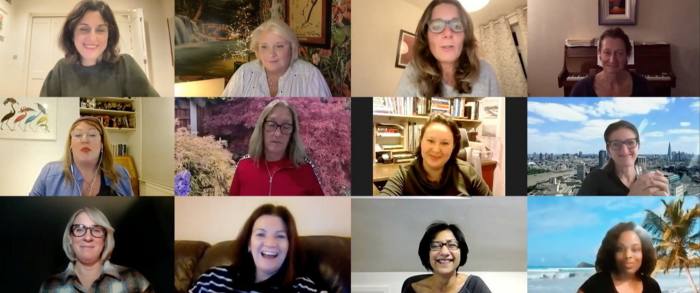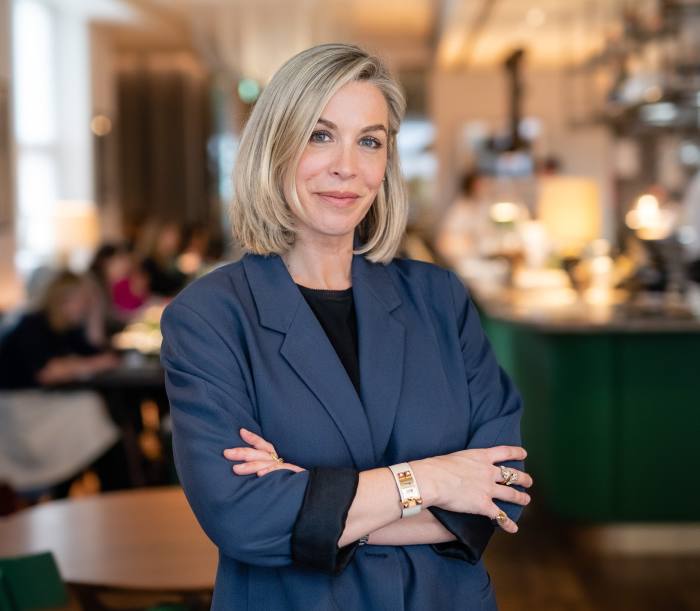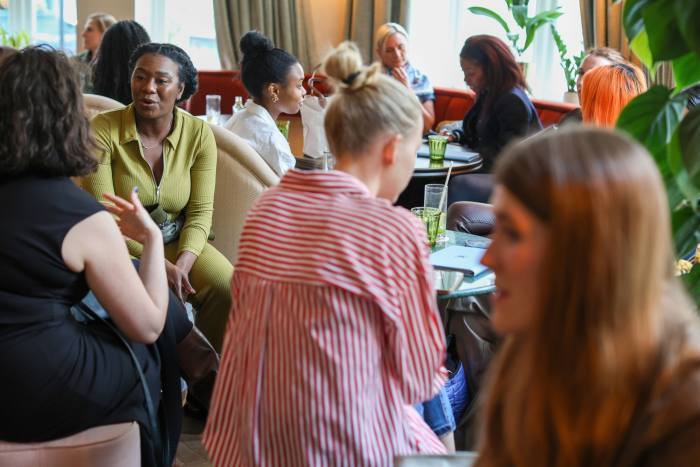
Joanne Webb thought The Girls Club virtual network she set up for senior women looking to let off steam during Covid lockdowns would “fizzle out” once restrictions had lifted.
In fact it has “taken off [over WhatsApp, Zoom and LinkedIn]. Over the last couple of months, we’ve had two or three hundred join,” the management consultant said.
Entrepreneur Sharmadean Reid launched The Stack World in 2021, with investment from Tetra Pak heir Magnus Rausing and former Monzo Bank head Tom Blomfield, in response to “women feeling neglected, stuck at home”. Its free and paid-for premium membership has grown to 14,000.
Other female members’ clubs are experiencing a similar trend: remote work patterns that have come into force during the pandemic have encouraged women to network outside of the office, often as a way to increase their visibility.
“As you build your career . . . you need visibility and to be strategic. That needs networks,” said Nicola Grant, founder of SHe2 Leadership, a group aimed at senior women wanting to develop skills and contacts to get C-suite jobs.
She added that women’s desire to connect was also partly driven by frustration with employers’ ineffective diversity initiatives. Grant criticised some companies’ “inauthentic or unsustainable” female leadership programmes “that fail to deliver long-term support to them and critical changes to the company culture.”
***
Female networking groups typically offer in-person or virtual meetups for professional women looking to advance their careers. Some, such as The Girls Club, offer free, online events covering topics such as how to become a non-executive director and masterclasses on public speaking and ESG. Others, such as AllBright and Chief, charge membership fees.
Many of the people who set up the groups said the pandemic had fuelled demand — and changed how women wanted to use their time.
“Hybrid work models [mean women] crave a network more than ever . . . whether it’s bouncing ideas or [curbing their] isolation,” said Viviane Paxinos, chief executive of AllBright.
Florence Villesèche, associate professor of Copenhagen Business School, who has researched female networks, said some women felt they needed to justify “spending their time out of the home”, which men often did not.
“If you’re going to take time out to go to something, you need to make it impactful post-pandemic,” added Grant.
The opening at the start of this year of a new clubhouse in central London by Chief, the US members’ group that charges up to $7,900 (and £7,900 in the UK) and bills itself as a club for “C-suite, senior executives, and accomplished VPs”, is the latest sign of confidence. Chief said its membership doubled last year to 20,000, with the majority of fees paid by employers.

Its high price tags and focus on senior women have sparked charges of elitism — although Chief said there was a niche for senior executives who were overwhelmed by the demand to mentor junior female workers, run the home and provide care.
Céline Crawford, head of operations and people at Fertifa, a women’s health business, said joining Chief’s London club alleviated her isolation. In finance and technology, “you’re often the only woman in a leadership team”, and need support rather than only advice.
Claire Davenport, former chief executive of Not On the High street, who runs Women In Tech — Execs and Non-exec Directors (Wits end), with eight female CEOs (including from Channel 4 and BorrowMyDoggy), said that women were more amenable to Zoom than in the past. “Women couldn’t always manage networking as easily as men [usually due to childcare issues], and now we have found formats that genuinely work to build networks remotely.” Despite the clubhouses, Chief also said virtual sessions were popular.

Some networks have themselves suffered from claims of exclusivity.
In March, a member highlighted this issue when she gave up her membership of Chief after three years. Denise Conroy published her reasons on LinkedIn, which she said included Chief’s ghosting of candidates who were women of colour, a lack of assistance for under-represented groups and posturing rather than political campaigning on issues that affect women. “I’m quitting because I had bigger hopes for this organisation. Bringing 20k accomplished women together has the potential to change the world. Yet, mobilisation doesn’t seem to be on the agenda . . . This is white feminism at its core.”
Her criticisms echoed those levelled in the past to former Meta executive Sheryl Sandberg’s Lean In groups, which encouraged women to fit into — rather than challenge — corporate structures.
One media executive who decided against joining Chief pointed out there was an inherent tension in high-end networks espousing inclusivity. “How do you square the circle of elite and diversity?” Frenchie Ferenczi, the former director of community at The Wing, the women’s co-working space that itself faced discrimination claims before it closed in 2022, said: “The difficulty is if people say the message is inclusivity, but the reality isn’t.”
Chief pointed to data showing that 33 per cent of its members in the US identified as a person of colour and said it provided $5mn in grants last year to members needing financial assistance.
Supporters highlighted that private women’s clubs were held to different standards than those for men; there tended to be the expectation that women’s clubs should be more inclusive whereas their male counterparts did not face such pressure.
Rebekah Bostan, director of research and operations at InsTech, a community of insurance tech innovators, warned there was also a danger of “groupthink”. “It’s really easy to get your views reinforced, as women [members] have probably had similar experiences.”
Villesèche added: “Being with other women may help members understand that barriers are not necessarily personal but more systemic.”
Bostan believed diverse networks could be more productive. “If you’re in a senior position, you’re managing people. The more different people you can meet, the better you can manage. It’s a bit like reverse mentoring. We give managers so little support and structure. Getting someone to talk about their experience means I can get something out of it and apply it to my team.”
Working It newsletter

Sign up to the Working It newsletter for everything you need to get ahead at work, in your inbox every Wednesday
While the pandemic may have boosted demand for women networks, some are still failing to reap financial benefits.
AllBright, for example, has more than doubled its membership from around 1,400 in December 2020, to more than 3,000 last year, but it is yet to be profitable. The pandemic forced temporary closures of its clubs and then later permanently closed its Los Angeles site. Losses in the last financial year were £6mn, down from £13.7mn in the previous year ending March 2021. Since Paxinos became chief executive last August, her focus has been to stabilise the business, which is now trading at pre-Covid levels.
“Communities don’t grow on venture capital timelines,” said Ferenczi. While the former Wing employee believed there was nothing “inherently problematic about paying” to join a community — a fitness club, for example, might have a thriving social life but “the value proposition is clearer. If you’re just paying for community it creates differing expectations.”
Reid said: “If you want to build something with longevity, it might be slower than you expected. If you want to build trust and community, you have to be slow.”
Some remain sceptical of the promise of formal commercial networks. Bostan said: “Lean in, lean out. I haven’t seen many make a substantial difference.”
Is there now even greater need for female networks?
The FT’s Women in Business network asked members if there was more of a need for female networking groups post-pandemic. Here’s what they said:
-
“I personally find it useful to feel part of something bigger than myself and hear from other women and how they deal with their day-to-day challenges. It is either inspiring or comforting to know that we are not the only ones struggling with certain aspects of our lives.”
-
“[For me] it’s 99 per cent online now . . . I’m not sure if it’s because of life events that happened during the pandemic or because things have changed more generally but my availability has shrunk in the past three years, so I have to prioritise and cherry-pick where I dedicate my time.”
-
“Yes, more than ever since the impact of the pandemic has been tougher on women still doing most of the housework, even if they’re lucky enough to have progressive partners.”
-
“The pandemic had damaging effects on wellbeing and so having access to networks with people experiencing the same challenges is extremely beneficial.”
https://www.ft.com/content/9b239dfb-78c7-49f9-9498-6048b0117de9






